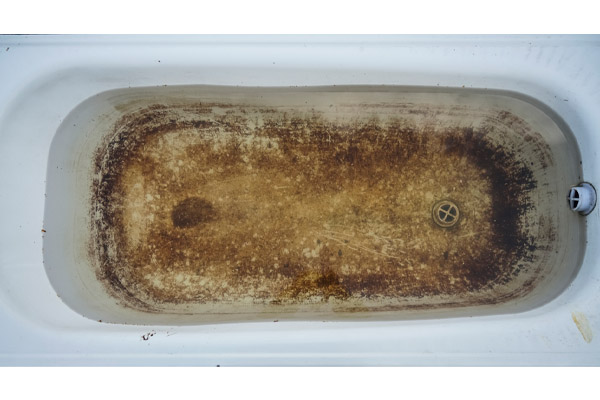Leading Reasons Behind Drainage Backflow in the Bathtub
Leading Reasons Behind Drainage Backflow in the Bathtub
Blog Article
They are making several great annotation on Water Coming up Bathtub Drain as a whole in this great article following next.

Sewer back-up in the bath tub can be a traumatic and unhygienic problem for any type of property owner. Not just is it inconvenient, however it also postures serious wellness risks and indicates underlying issues with the plumbing system. Recognizing why sewer is turning up through the tub is critical for taking proper action to resolve the trouble properly.
Intro to the Concern
Typical Reasons for Sewage Backup
Blockages in the Drain Line
One of one of the most common reasons for sewer backup is a blockage in the drain line. This can take place as a result of the accumulation of particles, oil, or foreign things in the pipelines, preventing correct circulation and triggering sewer to support into your bath tub.
Tree Origin Invasion
Tree origins seeking dampness and nutrients can infiltrate drain lines via little cracks or joints. Gradually, these roots can expand and expand, causing substantial damage to the pipelines and causing sewer backup issues.
Understanding the Trouble
When sewage draws back up into the tub, it's a clear indication of a trouble with the drain system. The wastewater that must be flowing far from your home is rather discovering its way back right into your space, which can result in substantial damage and health hazards.
Potential Reasons
Numerous factors can add to sewer back-up in the bathtub. From blockages in the drain line to concerns with the plumbing framework, identifying the source is essential for locating an option.
Aging Framework
Older homes may have outdated plumbing systems that are a lot more prone to deterioration, splits, and degeneration. As pipelines age, they come to be a lot more vulnerable to leakages and obstructions, boosting the probability of sewer backup occurrences.
Heavy Rainfall or Flooding
Throughout periods of heavy rainfall or flooding, the drain system might become overloaded with excess water, triggering backups and overflows. This can cause sewer backing up right into bath tubs and other components inside the home.
Signs of Sewer Back-up
Foul Odors
Unpleasant smells emanating from drains or fixtures, specifically in the washroom, may suggest sewage backup problems. These odors are usually strong and consistent, signaling a trouble that calls for prompt attention.
Slow Draining Fixtures
Bath tubs, sinks, and bathrooms that drain gradually or otherwise whatsoever could be experiencing sewage back-up. If numerous components are influenced concurrently, it's likely that the problem originates from an usual factor, such as the primary drain line.
Gurgling Sounds
Odd gurgling or bubbling sounds originating from drains when water is running in other places in your home are indicative of air trapped in the plumbing system. This air build-up can result from sewer backup and need to be checked out promptly.
Wellness Risks Connected With Sewer Backup
Contamination of Water
Sewage backup can pollute the water in your home, positioning a significant health risk to you and your household. Direct exposure to infected water can bring about gastrointestinal issues, skin infections, and other illnesses.
Mold Development
Dampness from sewage backup can produce excellent conditions for mold and mildew growth in your house. Mold spores can intensify respiratory system issues and create allergies in sensitive individuals, making prompt clean-up important.
Spread of Condition
Sewer contains unsafe microorganisms, viruses, and parasites that can trigger a range of illness, including hepatitis, cholera, and gastroenteritis. Entering contact with sewer or infected surface areas puts you in jeopardy of infection.
Tidying up After Sewer Backup
Sanitation Procedures
Thoroughly decontaminate and sanitize impacted locations after sewage backup to remove damaging microorganisms and avoid mold and mildew development. Use suitable cleansing items and safety equipment to guarantee risk-free and efficient cleaning.
Restoration of Affected Areas
Repair any type of damages to floor covering, wall surfaces, or components triggered by sewage backup. Relying on the degree of the damage, you may require to change carpeting, drywall, or various other materials to recover your home to its pre-loss problem.
Immediate Actions to Take
Shutting Off Water Supply
In case of sewage back-up, it's important to shut off the water to stop additional contamination and damage. Locate the primary water shutoff valve in your house and closed it off till the concern can be solved.
Calling a Specialist Plumber
Taking care of sewer backup is not a do it yourself work. Get in touch with a qualified plumber with experience in handling sewage-related problems to evaluate the situation and execute required fixings or cleanups.
Preventing Contact with Polluted Water
Till the sewage backup is settled, avoid contact with contaminated water to prevent the spread of bacteria and virus. Wear safety equipment if you have to remain in the damaged location and wash your hands completely afterward.
Preventive Measures
Routine Upkeep of Sewer Lines
Arrange routine inspections and maintenance of your sewer lines to determine and deal with prospective problems before they intensify right into significant issues. This can include clearing out debris, evaluating for tree origin breach, and fixing any type of broken pipes.
Setting Up Backwater Shutoffs
Think about installing bayou valves in your plumbing system to prevent sewer from receding right into your home during periods of heavy rainfall or flooding. These valves immediately close when water draws back up, shielding your building from contamination.
Correct Disposal of Household Waste
Stay clear of purging anything besides toilet paper and human waste down the bathroom to avoid blockages and blockages in the drain line. Dispose of oil, oil, and various other household chemicals correctly to reduce the danger of plumbing problems.
Why Is Water Backing Up in My Bathtub When I Flush My Toilet?
What to do about a sewer line clog
First, don’t bother with plunging. No amount of plunging will dislodge the clog in a sewer line. The clog is too far away. Plungers are for clogs in the toilet itself, not the sewer line. Plus, the most likely causes of a sewer clog are:
Tree roots Flushed toys or feminine products Grease buildup Those items don’t move easily. And in the case of tree roots, the roots need to be cut out of the pipe and the pipe will need to be repaired.
You’ll need a closet auger. A closet auger is a type of plumber’s snake with a protective cover to keep from scratching the delicate porcelain toilet. If the clog is further down, you may need to remove the toilet or use one of your cleanouts to get to the clog.
We also recommend doing a video inspection of the drain to ensure that the cause of the clog has been completely removed. Otherwise, you could have the same problem again in a few days or weeks.
https://mspplumbingheatingair.com/blog/why-is-water-backing-up-in-my-bathtub-when-i-flush-my-toilet

I am just very involved in What To Do If Sewage Starts Backing Up Into the Shower and I hope you liked the new blog posting. Do you know anybody else who is curious about the niche? Take a moment to share it. Kudos for being here. Return soon.
Suggested Site
Report this page